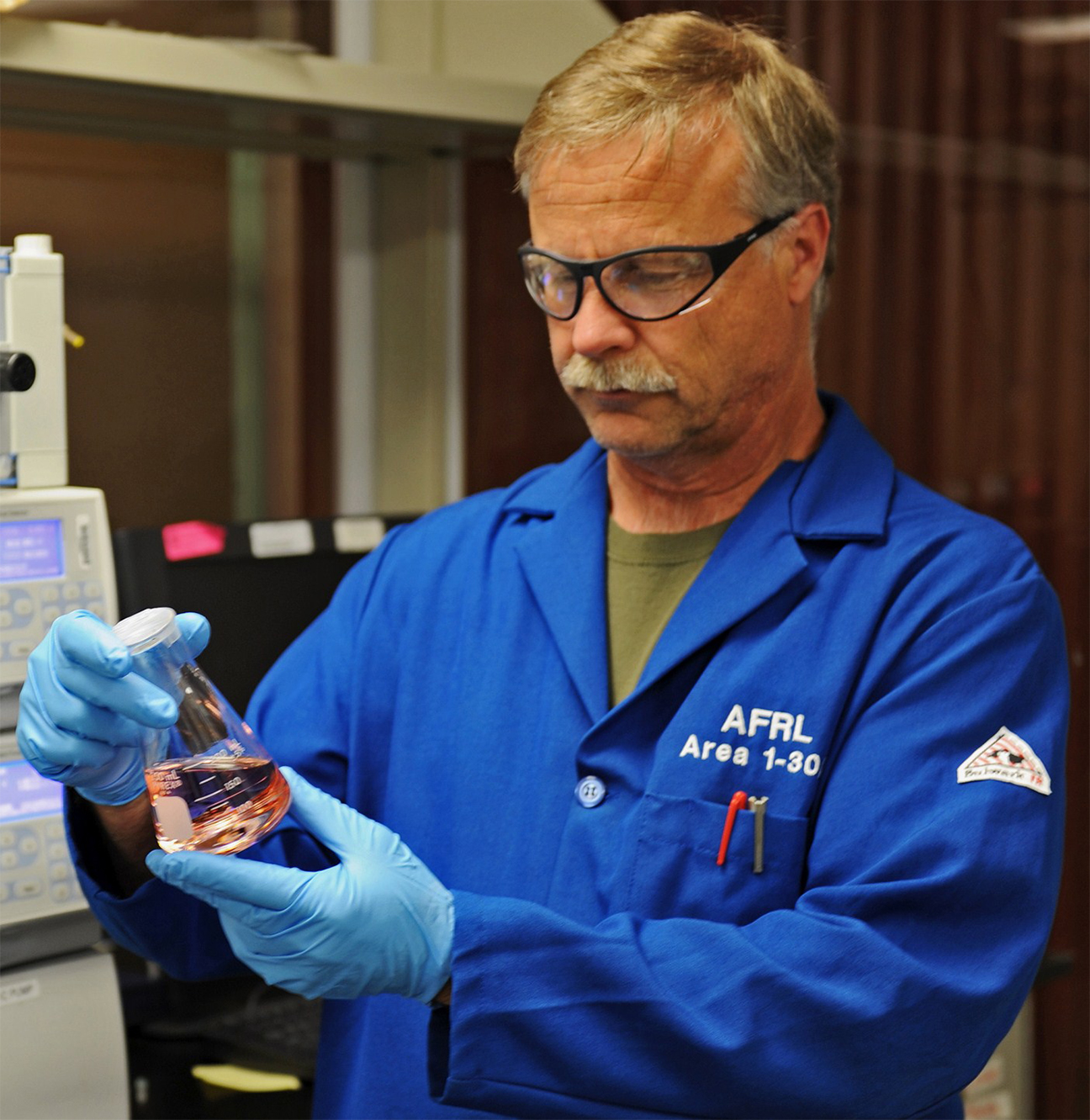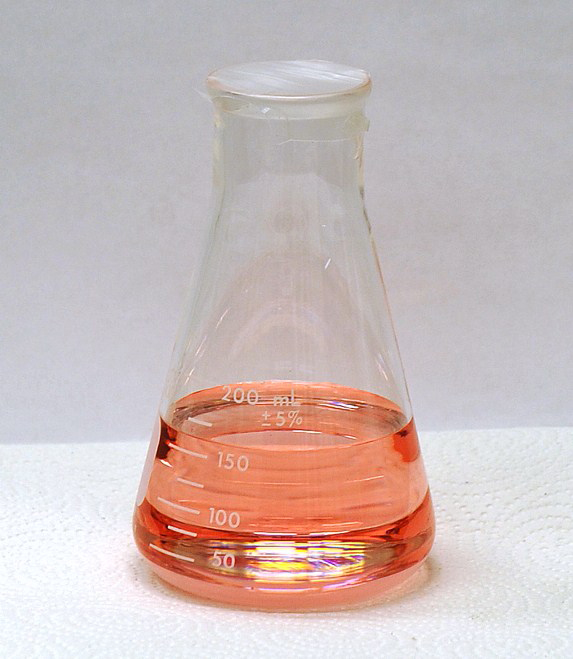Advanced Spacecraft Energetic Non-Toxic (ASCENT) Propellant
AN ADVANCED MONOPROPELLANT FORMULATION
ASCENT (Advanced Spacecraft Energetic Non-Toxic) propellant, formerly known as AF-M315E, is an advanced monopropellant formulation developed by the Air Force Research Laboratory (AFRL) Rocket Propulsion Division (RQR). ASCENT delivers a 50% increase in density specific impulse over the present state-of-the-art hydrazine monopropellant. In addition to its performance advantages, ASCENT decreases handling hazards compared to hydrazine.
RELATIVE TO HYDRAZINE:
- Increased propulsion system delivered performance
-
- Reduced footprint for same velocity impulse
- Increased velocity impulse for the same footprint
- Reduced ground operations effort
-
- Faster turn around
- Decreased personnel
- Decreased equipment overhead

Retired research chemist Milton McKay working with the ASCENT propellant. Photo Credit: R. Fair/Media Fusion
In order to progress to thruster development multiple additional requirements of manufacturability, long term stability, small and large scale hazards were resolved.
The decomposition reaction of ASCENT is more demanding of material technologies compared to hydrazine thruster components. The delivered energy increase of the formulation is achieved with contributions from both the specific impulse and the density of the propellant. AFRL leads the efforts to tailor the thruster design, materials, and propellant producability. Today, ASCENT is a commercially available commodity.
NASAs Green Propellant Infusion Mission program is the first-ever, on-orbit demonstration of an ASCENT fueled spacecraft.
DIFFERENTIATED THROUGH DELIVERED PERFORMANCE
Similar to hydrazine, ASCENT monopropellants are decomposed by a reactor based thruster to produce high temperature and velocity gas. Like hydrazine, the reactor requires a minimum pre-heat temperature to ensure reaction. ASCENT differentiates itself from hydrazine through delivered performance. Because of it’s increased energy density, the propellant affords a range of significant advantages such as volumetric efficiency wherein same delivered velocity impulse from a smaller system or increased velocity impulse for a similarly sized hydrazine system. This flexibility can be applied to increase payload or maneuverability solely or split the advantage between the two.
Ground operations are significantly reduced due to the decreased hazard of ASCENT. Hydrazine requires more significant crew training, size, and personal protective equipment. Also, hydrazine requires more complex transfer equipment for spacecraft loading. ASCENTs reduced vapor pressure and reactivity at atmospheric conditions significantly reduce hazards.
REDUCED TIME AND COST
ASCENT increases performance and operability, enabling a wider range of platform envelopes and mission objectives. ASCENT reduces the time and cost objectives common to hydrazine. Increased energy density and reduced hazards significantly improves ESPA class spacecraft capabilities, which are advantageous to the space community.

Close-up of the ASCENT propellant. Photo Credit: R. Fair/Media Fusion
CLICK HERE to learn more about MODPROP.
